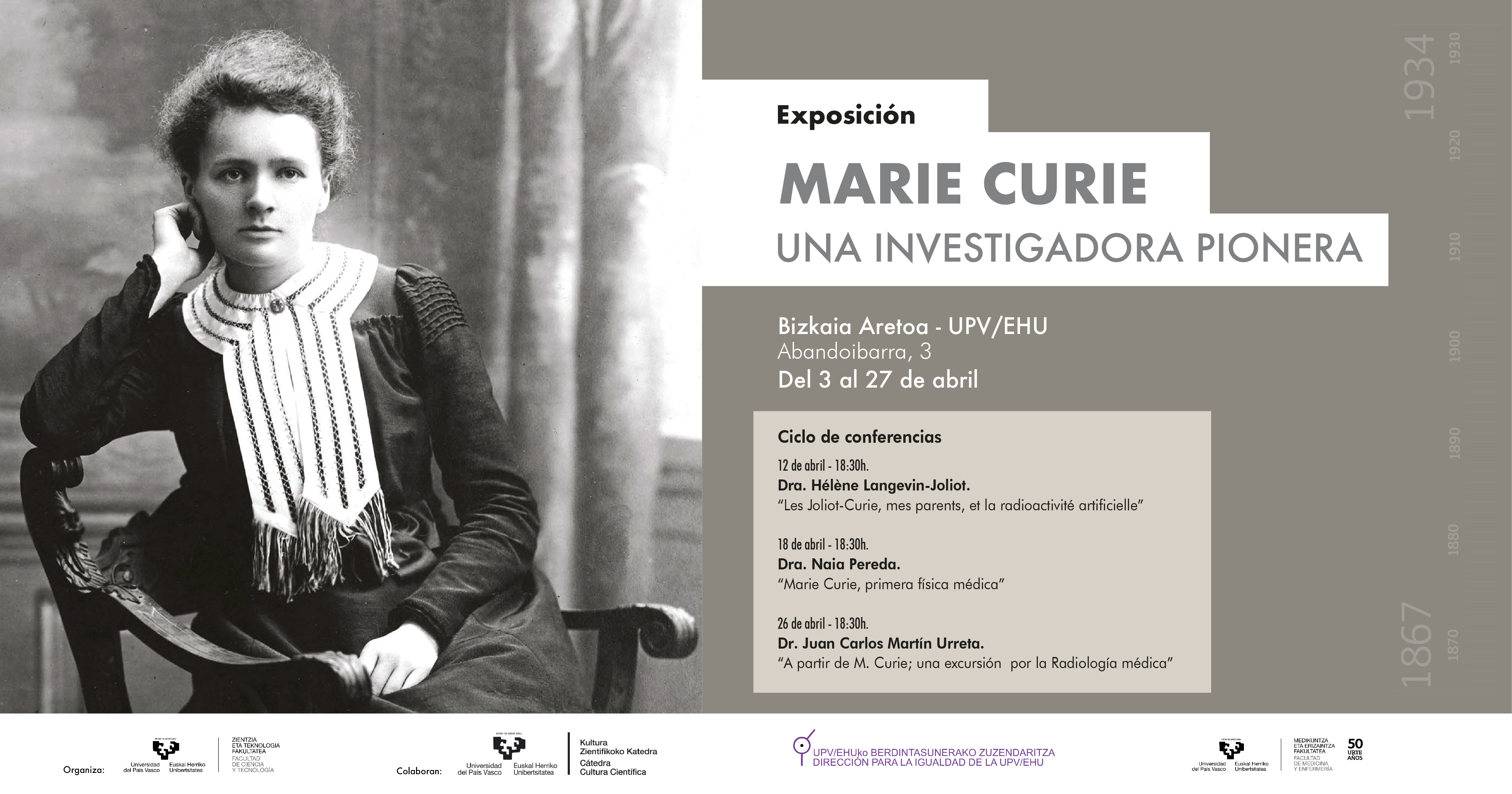Xehetasunak
Data eta ordua:
3 de April de 2018 / 08:00 – 27 de April de 2018 / 20:00
Egoitza
Radium and polonium were discovered in 1898 by the iconic Curie marriage, Pierre and Marie Curie. They both received the Nobel Prize in Physics in 1903, a prize shared with the physicist Henri Becquerel. Although it was Marie who had carried out important research in the field of radioactivity, she often delegated her work to the background due to the patriarchal context at the time; however, her research work was so crucial that Curie is considered to be one of the most influential women in science to date.
Both in Warsaw in 1867, Marie Salomea Sklodowska, better known as Marie Curie, was a pioneering woman in her time. In a society where women were not often seen in science, the Polish chemist and physicist became the first female Physics Professor at the University of Paris, and the first woman to receive two Nobel prizes in different specialities; she was awarded the Physics Prize in 1903, and the Nobel Prize in Chemistry eight years later for being the first person to isolate a gramme of radium.
The UPV/EHU Faculty of Science and Technology has organised an exhibition called “María Sklodowska Curie, a Polish Woman in Paris”, aimed at sharing the life and contributions of the renowned scientist. The exhibition has been organised in collaboration with the Chair of Scientific Culture, the Faculty of Medicine and Nursing, and the Equality Directorate of the UPV/EHU, and it can be visited at the Bizkaia Aretoa building in Bilbao until 27 April.
The exhibition will include a total of twenty panels that analyse Marie Curie’s work and dedication to research, as well as her human and caring side. In addition to her role as a scientist, Marie also made an outstanding contribution to health-care during the First World War, as her x-ray work meant that the diagnosis and subsequent treatment of wounded soldiers was significantly improved.
The exhibition will be concluded with a cycle of three lectures which will start on 12 April with a presentation given by Dr Hélène Langevin-Joliot titled “Les Joliot-Curie, mes parents, et la radioctivité artificielle”. On 18 April, Dr Naia Pereda will give a talk entitled “Marie Curie, the first medical physicist”. The cycle will end with a presentation given by Dr Juan Carlos Martín Urreta entitled “Starting with M. Curie, a tour through medical radiology”.
The lectures will be given at the Bizkaia Aretoa building at 18:30 and entrance is free, although spaces are limited. Please confirm attendance at: mariecurie.fct@ehu.eus.

